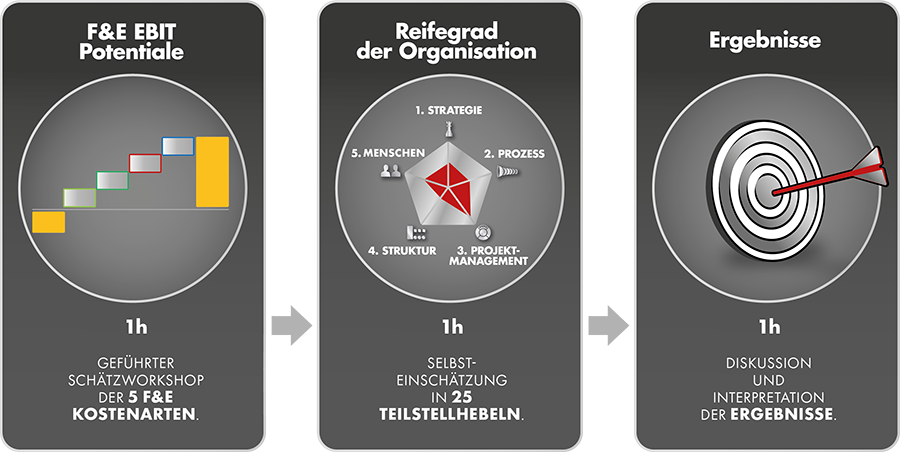1. Tried 1000 times …
… 1000 times nothing happened.
“For 16 years, we’ve been trying to develop a global platform concept. All we ever heard was: It can’t be done – every customer wants something different. We’re in the bodywork, each car model has its own styling,” was the sales team’s killer argument.
Then came the new CTO. Some colleagues claimed he had bones in his mustache. He started with the screws – instead of failing again with the global top-down concept. After that, he formed small standard “building blocks.” Piece by piece, he gained ground. The savings in manufacturing and assembly could be calculated. He remained persistent and tenacious. Slowly but surely, the mood shifted and resistance crumbled. Then there were more and more “fathers of success.” The platform became a success story.
When I asked the CEO, he enthusiastically said to me, “We’re celebrating the record year in company history. Both in revenue and in EBIT. The fact that we were able to increase profit so significantly is largely due to our new platform!”
PLATTFORMMANAGEMENT


2. “Shit on the past”!
That was the simple yet clear statement from our American colleague. He meant to say that it doesn’t make sense to streamline and correct the accumulated variety of variants. The “sins” of the past have their own story and, above all, personal defenders, leading to long and agonizing discussions. In the end, we reach a few compromised solutions and invest a lot of time and effort into them. Let’s focus on the future instead. We should define a target image, and any new product variant diverging from this target image must be approved.
To achieve this, we need a committee in upper management that makes decisions monthly based on defined standardization rules for the near future. This requires a new cost calculation. Continuing to only consider material costs will lead to the failure of standardizing standard parts. For standard parts, the process costs (inventory holding, procurement, logistics, inbound/outbound goods), which are what truly costs us for a new variant, are significantly higher than the purchase price.
Therefore, a future-oriented target image and a decision-making committee with process cost calculation are necessary.
PLATTFORMMANAGEMENT
Bottom upandtop Down
If we build our platform solely based on the C-parts, we will miss the overall concept. Bottom-up and top-down approaches must complement each other equally.
Too often, however, we have experienced that the top-down target image was too far removed from reality. This led to a lack of acceptance from those working in the present. A pragmatic approach at one of our clients was to define one of the existing complete systems as the basis for the platform. It was freed from all customer- and application-specific peculiarities and designated as the reference.
From then on, every new concept had to compare itself with this reference and align accordingly. It wasn’t perfect at the beginning, but it was implemented quickly. Optimization occurred in stages, well-adjusted to the changing market requirements.
PLATTFORMMANAGEMENT


4. Imagine there is a “platform” – and no one shows up.
The new concept enforced with a sledgehammer and dictated from above will fail. Democratically based, bottom-up approaches have also rarely been successful. Completely without guardrails and clear decisions is unrealistic. A successful platform requires a decision-making body at the top management level.
For the operational implementation of platform development and standards, people must be able to focus on this work. The biggest mistake is trying to develop the platform on the side alongside customer or market development – this has never worked.
Organizational structures where development is carried out autonomously and independently are extremely resistant to any form of standardization and harmonization. Often, breakthroughs only occurred when operational developers were consolidated into a central unit.
To avoid swinging from one extreme to another, system developers were positioned in decentralized business lines. This created a balance between synergy and autonomy. The BREATHING ORGANIZATION.
PLATTFORMMANAGEMENT
5. Roll-out with some fun.
“We already have a standard,” expressed a puzzled product developer. He meant, “if everyone else would align with my product architecture, everything would be straightforward!”
In the market, only what convinces sales and aligns with their enthusiastic arguments can be sold. It must not contradict their incentivization model.
Production and assembly see advantages when economies of scale kick in, work becomes easier, and automation levels increase.
The commitment of all relevant departments is key!
The intriguing question is – how do we achieve it? How do we ensure everyone gets on board?
When it’s fun!
When cross-functional key players are actively involved. Everyone works on developing the platform in short, regular intervals. We support each other. We motivate and encourage each other even in setbacks. We celebrate our successes.
On a transparent AGILE BOARD prominently displayed, you can see the rollout plan progressing towards success.
“Without a coach, we would have never made it!” Change requires change experts. People who bring experience, neutrality, methodology, and credibility.
PLATTFORMMANAGEMENT

Self-Assessment Workshop

Improvement Potential

Assess PLATTFORMMANAGEMENT Potential.
1. Current State Analysis.
– First, we want to understand your current situation.
2. Self-Assessment-Workshop.
– In the self-assessment workshop, we will show you best practices.
3. Action Plan.
– Based on this, you assess your need for action.
4. Improvement Potential.
– We estimate the quantitative improvement potential.
5. Vision.
– Together, we define a vision.
6. Implementation Plan.
– We establish an implementation plan.
We estimate your R&D performance.
The R&D Performance Self-Assessment.
In a 3-hour workshop with the R&D leadership team, you will learn about our methodology:
Part 1: Self-assessment of R&D EBIT cost potentials.
Part 2: Maturity level of the organization across 5 levers.
Part 3: Result interpretation.
By narrowing down through scenarios, it quickly becomes clear whether an initiative is worthwhile.

